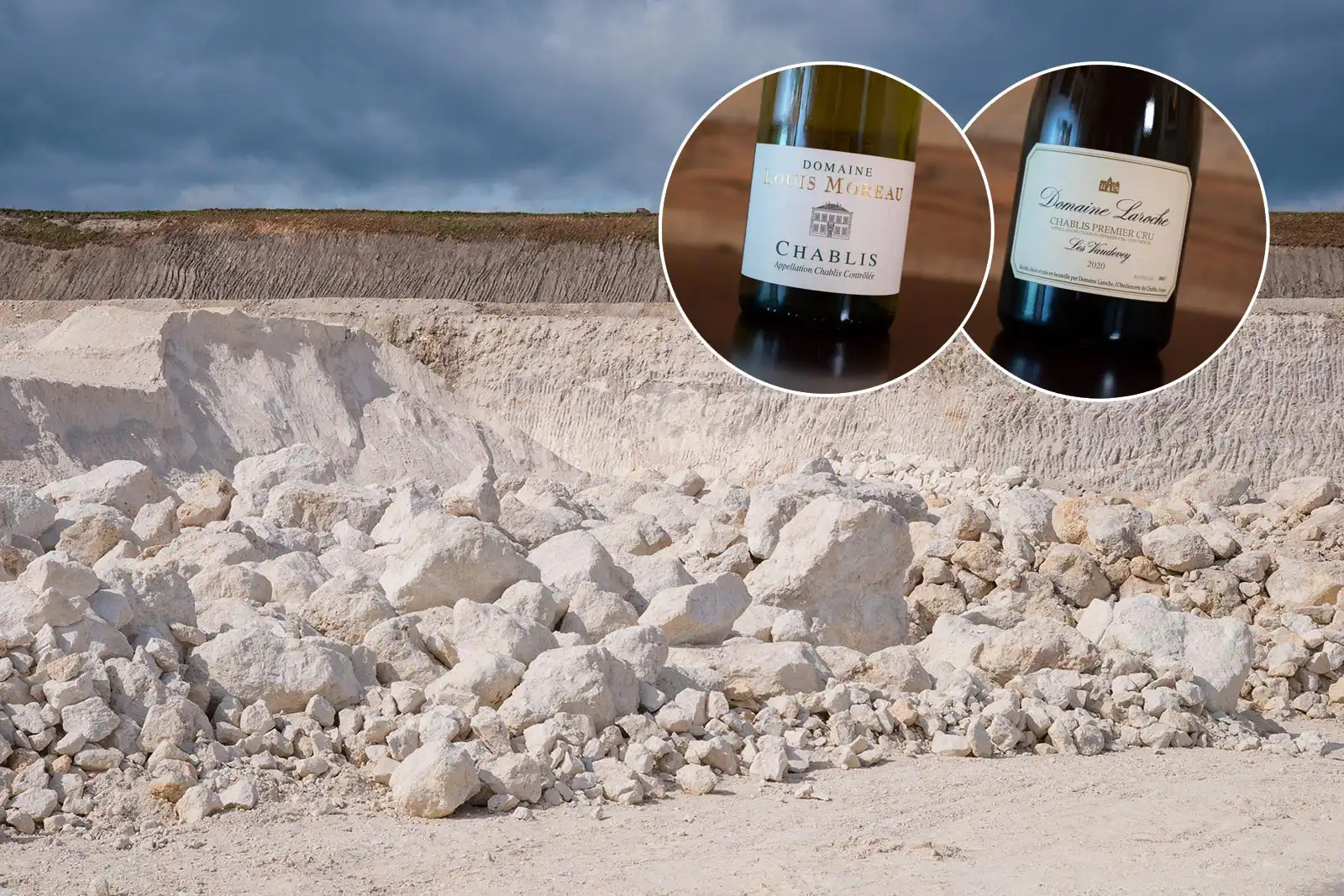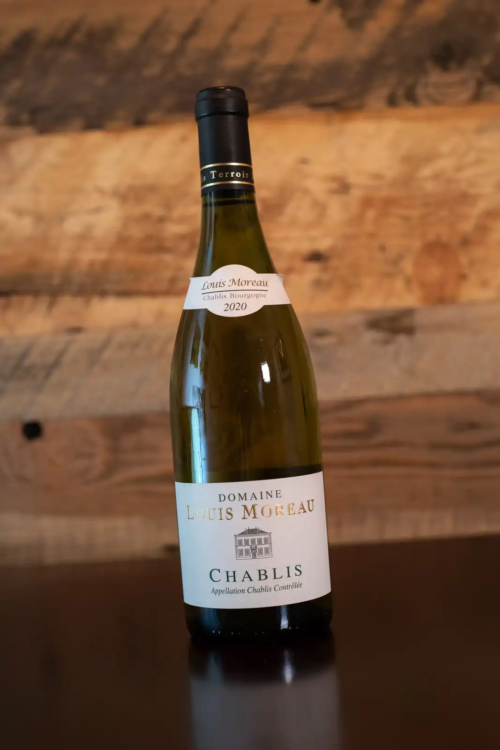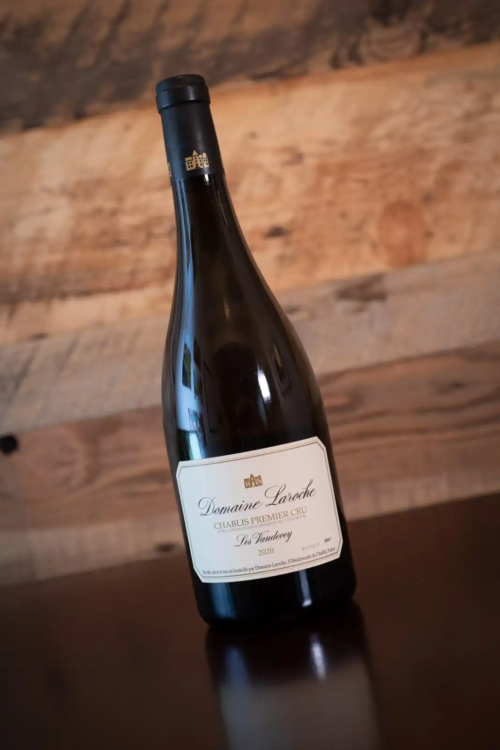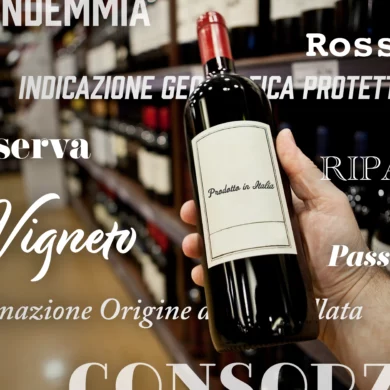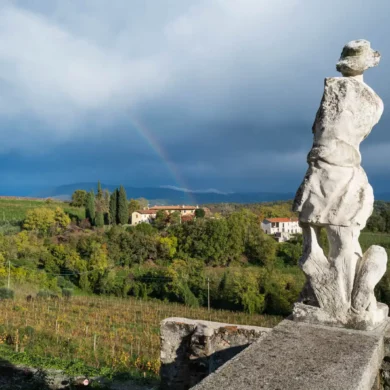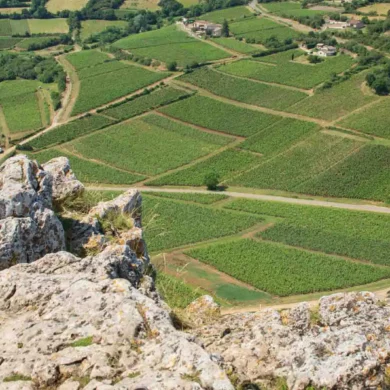Wine is highly susceptible to fashion. Try to grab on to the latest and greatest, and you’ll likely feel like this funny little ecosystem of ours has already moved on to something else. But for some time now, one quality in wine has been as sought-after as any: “minerality.” And that is rather funny, because “minerality” is not a word. Or at least, it is not recognized as one in any dictionary I have found. Real or not, wine professionals use this term constantly, because there isn’t yet a better way to describe the sensation it conveys. And this is exactly why language itself is prone to fashion, too. New concepts emerge with no good way to describe them. Voilá! We invent a word and it becomes real.
Well, it is high time we recognize minerality as a word, and Chablis as its nerve center.
Why Chardonnay from Chablis?
Minerality plays in the space of evocation. Sorry, not sorry.
While some grape varieties do an excellent job of conveying minerality from certain locales (see below for some examples), no other combo of grape and place demonstrate the concept more clearly and consistently than Chardonnay from Chablis. It is a trait that seems to persevere in Chablis no matter who the producer is, and whether they embrace malolactic fermentation or oak-barrel aging in the cellar. Chablis’ minerality is durable.
Yet the concept still holds plenty of mystery, and some simply cannot stand its ubiquity as a term because it has no concrete, definitive, scientific explanation. Does minerality come from the soil? Is it a by-product of fermentation that happens only with grapes grown from certain terroir? What even is it? Two people can detect two different phenomena in the same wine, label each as “minerality,” and yet think they’re talking about the same thing.
I love the mystery of this, and embrace it. But I, too, would love some answers.
In preparation for an online wine class on Chablis, I interviewed winemaker Louis Moreau and Baptiste Gentil from Domaine Laroche to get their perspective on Chablis, and namely that mysterious, stony, nervous energy to the region’s wines that we often call minerality.

Watch Our Online Wine Class on Chablis
Opening a Bottle subscribers can access any of our recorded wine class, such as the session we hosted that was focused entirely on Chablis. Paying subscribers gain access to our Study Guide with recommended producers and wine-buying tips on Chablis, and can access any of our other past classes via Vimeo.
So, Let’s Define Minerality
On the most simplest of levels, minerality is a series of traits in a wine that combine to conjure a feeling of stoniness. If “feeling” seems nebulous … well, welcome to the world of minerality. When you encounter it in a wine, minerality often has to do with what it conjures in your mind. A sip can summon the smell of quenching rain on a dry, hot day (also known as petrichor). It can even bring to mind the sound of gravel under foot, or the sensation of running your hand over a polished stone. Minerality plays in the space of evocation, and because of that, those of us with poetic tendencies can easily get carried away with it.
So let’s get grounded for a second. Where minerality comes from and how different people perceive it, has led some to call it a texture, others a flavor or an aroma, while others think it is some combination of these factors. What we all know, however, is that minerality is a “know it when you see it” phenomenon.
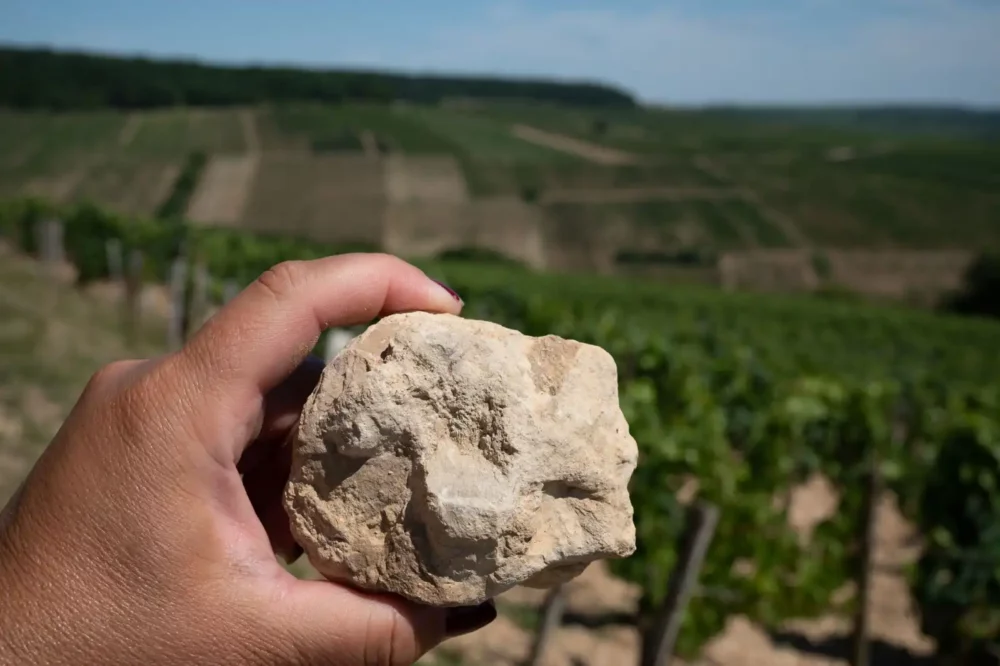
“For me, minerality is the expression of leaness. In French, we say en tranchant, which is razor sharp [or to slice]”
Louis Moreau
Winemaker
“For me, minerality is the expression of leaness,” said winemaker Louis Moreau. “In French, we say en tranchant, which is razor sharp [or to slice].” He noted that often times what we are describing has to do with the character of the acidity in the wine, and the way it creates a sensation of energy and tingling on the palate.
Baptiste Gentil — a former winemaker who is now the Business Manager for the Chablis-estate Domaine Laroche — agreed. “I believe in minerality,” he said. “But to me, mineral is not a taste. I have never tasted a stone, so I cannot say what the taste of a stone is.” He firmly believes that minerality is caused by many things combined on the palate. You need high acidity, first of all, but also aromatics that suggest brightness and smokiness, such as citrus and flint. Lastly: the perception of saltiness gives the wine length and fosters a desire for another sip, and it is in these combined factors, Gentil believes, that we have minerality.
Why Does It Appear in Chablis?
While certain soils appear to create minerality with greater ease than others, it is not in fact the soil that we are sensing in the wine. Rather, the soil has fostered growing conditions ideal for minerality to develop in the wine, likely during fermentation.
“This is really typical of Chablis,” Gentil added, further noting that Kimmeridgian marl — which is found underneath the Grand Cru and Premier Cru vineyards — consistently yields a mineral wine, while Petit Chablis from Portlandian marl hardly ever does. There, aromas and fruit are the headline act.
“The vines simply behave differently [on Kimmeridgian marl]” he noted. “The water will drain more easily on that part. When they are on gray [Portlandian] marl, water will be retained more.” A little hydric stress for the vines will often result in more concentrated flavors and a more austere body to the resulting wine. With a fuller bodied wine, the minerality is often obscured and overwhelmed by other traits.
But soil is not the only answer for why Chablis has such massively mineral wines. After all, this isn’t the only place in France with Kimmeridgian marl.
“It is also due to the location of Chablis on the map,” noted Moreau. “Even though things are getting hotter and hotter, for me, anything above the Loire Valley [like Chablis] is still a cool climate.” Chablis’ rainfall and the many microclimates within the zone add to the character traits of Chablis wine as well. But there are also cultural elements that help preserve minerality. For centuries, minerality has defined Chablis, and there is an appellation-wide commitment to shepherding the grapes from vineyard to cellar to bottle with as much of that trait preserved as possible — something that is particularly vital in the age of climate change.
“Obviously, soil is important, because it gives the wine complexity and depth,” Moreau summarized, “but it is really a combination of three, four or five factors.”
Where Else Can Minerality Be Found?
Riesling is particularly adept at revealing minerality, especially from the Mosel River in Germany, the Kremstal and Kamptal in Austria, and numerous Grand Cru vineyards in Alsace (although I would have to say that the stylistic considerations in these regions are more open-ended than Chablis, leading sometimes to rounder wines). That same aptitude for minerality can be found with the Albariño grape when it comes from Rias Baixas, Vinho Verde and the Central Coast of California.
In Italy, minerality is everywhere, and most closely associated with the country’s numerous volcanic wine-growing regions, especially Etna’s white, red and rosé wines, Campania’s Fiano di Avellino and Veneto’s Soave. But it is by no means limited to just volcanic soils, as Chablis so deftly demonstrates. Verdicchio from Castelli di Jesi’s limestone-clay soils often brings Chablis to mind, while the ultra-focused white wines of Collio and Friuli Colli Orientali in Friuli-Venezia Giulia leave a powerful impression of minerality, thanks to the area’s unique ponca soils.
In Valtellina Superiore, schist and granite soils clearly give Nebbiolo (known locally as Chiavennasca) a wonderful texture as well as aromas akin to petrichor. It is a trait wholly different than the minerality found in Barolo and Barbaresco. And how does Barolo’s minerality show? Often through an aroma that brings to mind potting soil, and through a unique texture that is only revealed once the wine’s powerful tannins have reached a silky state after several years in bottle. Yet even here, one could debate endlessly on whether this is minerality or just Nebbiolo’s varietal character. I’ve chased my tail countless times trying to pin a sensation that is either potting soil minerality or mushroom aromatics.
But do we need a definitive answer in such a debate? I’m not so certain. I’ve studied wine long enough to know that as soon as a “definitive answer” emerges, something else will come along to make matters more gray.
However in Chablis, minerality is fairly iron-clad. It is the identity, and there is no debating that.

Hey! You Made it to the End of the Article!
That’s awesome. I know that in this short-attention-span world, that’s no easy feat.
If you’d like to know more about Chablis (and dozens of other appellations), you can subscribe to Opening a Bottle and watch our 90-minute class on the region. New classes and new wine reviews are constantly affirming the value of your $5/month or $49/year commitment. Give us a try. Merci beaucoup!
